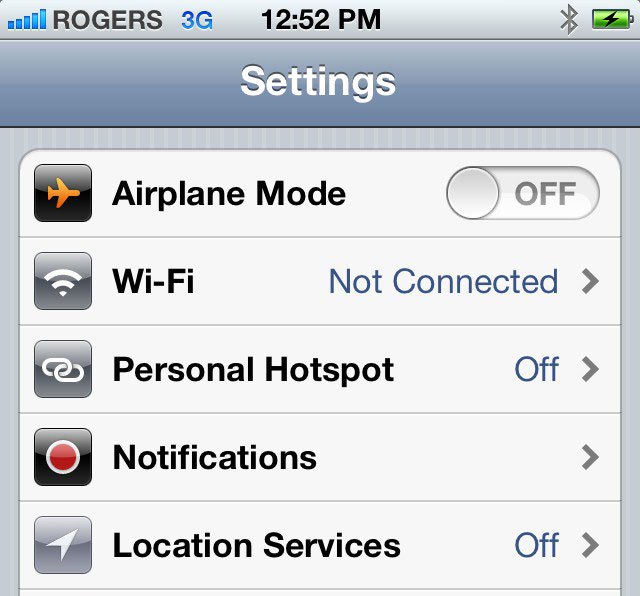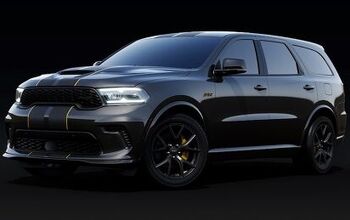Generation Why: I Don't Want To Share Anymore
My iPhone has no less than 7 social apps on it (Facebook, Facebook Messenger, Twitter, Tumblr, Tradyo and Instagram), not to mention Google Maps, which like the aforementioned programs, can utilize my phone’s built in GPS beacon to share my location with others (including Apple). My recently departed 1997 Miata was the anti-iPhone. No GPS, no traction control, a barely there ABS system, no electronic throttle. Everything mechanical. My next car will be similar. Simple, robust, resilient. What if we no longer have that option anymore?
Starting in 2015, new cars sold in the United States will, under proposed legislation, have “Black Box” electronic data recorders to help glean all kinds of data. Frankly, that’s the least of my worries, as much as I don’t like the idea of every event behind the wheel being logged.
In my own slightly paranoid opinion, the EDR program is a mere red herring, setting the stage for something else entirely. The end of driving as an autonomous activity. Market forces, like gas prices and car insurance premiums have slowly been putting a squeeze on the notion that getting behind the wheel and just going somewhere is the ultimate act of individual freedom. Now, we have Google’s autonomous (no irony intended) car program, which, as far as I can tell, is a great way for them to serve up more ads. If you’re not focusing on driving, you can watch Youtube content on your Google Android phone, check your Gmail, manage your social life with Google Calender and be totally engrossed in the Googleplex of targeted advertising using GPS beacons in your car and your self-driving Prius.
We all hear the canard that modern cars have never been safer, faster or more fuel-efficient, and it’s not only true, but a boon to the average consumer (perhaps at a cost to the enthusiast – but that’s another discussion for another day). More fuel-efficient cars means less fuel consumption – but it also means reduced revenue from the gas tax, which helps fund infrastructure projects like highways. Raising the gas tax in an era of economic depression would be like peeing on a political third rail, and even in good times, it’s challenging enough to do so. An alternative would have to be drawn up, and according to some well-placed D.C. sources, the inevitable alternative is cost-per-mile fees for driving.
Yes, that’s right. The government could track your every movement in your car (and it will be placed in every car) and bill you for it. I know that despite the best arguments from Grover Norquist & Co., we really do have to pay taxes to grease the wheels of society. Something is going to have to give. If it ever comes down to cost-per-mile taxation, there is going to be an absolute hellstorm of anger and vitriol, no matter who proposes it. I can remember as far back as childhood when Max Mosley and the FIA were showing off speed-limited vehicles based on GPS technology for European roads, and the British rags, already itching for a fight after the implementation of Gatso speed cameras, gave Max the kind of whipping that he’d have to pay £750 an hour for in a Knightsbridge dungeon.
Even if individual freedom is a distinctly American concept, the automobile is the main conduit for that all over the world; not the bicycle, not the motorcycle, not the bus or the train. Developing socities, like India and Vietnam, move on from the scooter and motorcycle as soon as their citizens can afford a car.
More than just a form of mobility, the automobile as individual transportation is a middle finger to the push towards communal living via the internet; “checking in”, “sharing”, “geotagging” and every other noxious form of soft exhibitionism that the tech nerd crowd craves (and, of course, uses to line their pockets – the more you share, the more data they have to help refine their “targeted advertising” systems). The rise of social networks is a constant theme in the media, yet young people are growing ever weary of social networks. Oversharing is frowned upon, and I’m far from the only one to have “nuked” my old Facebook profile (dating back from high school) taking with it all my valuable data, photos and status updates, while creating a new, more restricted account with a much smaller list of friends. The pendulum swing towards living one’s life publicly will not continue in perpetuity.
I spent the past 4 days in New York City, with a mandate to shut off all electronic communication, and enjoy what the greatest city in America has to offer; the grandest architecture, the most walkable streets and a culture that could not exist anywhere else in the world. I never once missed email, Facebook or Twitter, but I did miss driving. The streets of New York, crowded and brutal they may be, were filled with interesting vehicles. Town Cars and yellow cabs everywhere, vintage Land Rovers in Greenwich Village, sport bikes on Broadway, a British Racing Green Lotus Evora on Madison Avenue, a G55 AMG on Wall Street. All of them represent not just freedom of movement, but freedom of possibility. At 4 A.M., the Evora could hit well into the triple digits on one of those multi-lane boulevards. The G55 could drive all the way across the beach at Montauk without getting stuck.
These are, not coincidentally, the kinds of activities that are not meant to be “shared”. You can take someone along if you want to tresspass on protected land, or hit triple digits tearing through Midtown, but you’re not going to want to post photos or videos on Facebook. These things are the kind of experiences that stay forever in the imperfect recesses of the mind, to be discussed sotto voce for years to come among close friends. To “share” them would be profane, corrupting their very essence. Breaking the law isn’t always necessary, but we will always need a hedge against the utopian designs of those who want us all to ride bicycles and live our lives in the cloud. As I reach back into the caves of my mind, where the “Timeline” can’t yet reach, I recall the black NSX of my father, V6 at full song,and that same car becomes ever more appealing. Maybe Honda will be kind enough to give it a factory re-furbishing, so that I can enjoy the comforts of an essentially brand new car, albeit one free of electronic throttles and data-loggers.
We’ve already seen how old cars are capturing the hearts and minds of our youth more than any of the shiny new stuff on dealer lots. Might there be a new avenue for bringing old cars back to new? How would a car with the retro cachet of something old, combined with a modern refresh from the factory do in today’s world? Yes, it will certainly disrupt the current model of pumping and dumping inventory and making it sell, but a two-fold pushback, against conformist, boring new cars and their monitoring devices, revive the radical, reactionary idea of the automobile as one’s ticket to freedom.
More by Derek Kreindler
Latest Car Reviews
Read moreLatest Product Reviews
Read moreRecent Comments
- ToolGuy There was a time when in a place called America there were roads, and they were paved, and they were paved smoothly enough for a vehicle like this. Perhaps our next President will bring back that concept.
- ToolGuy I suppose I will listen before commenting. (TG, what a fair-minded dude!)
- ToolGuy "The technology is much more advanced to be better than a role model driver,”• Do any of you know what a "role model driver" is? No, I guess you wouldn't. 😉
- ToolGuy I might be Batman.
- Lou_BC Well, I'd be impressed if this was in a ZR2. LOL


































Comments
Join the conversation
New York has "the grandest architecture"? Note to our Canadian friend: Whether the average person realizes it or not, the United States' architectural capital is Chicago, not New York.
Deer god, we've angered the Canadians.